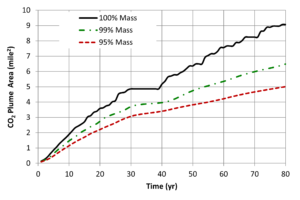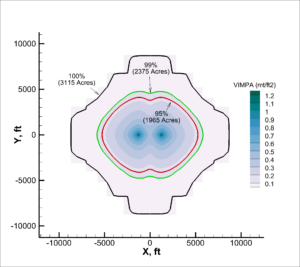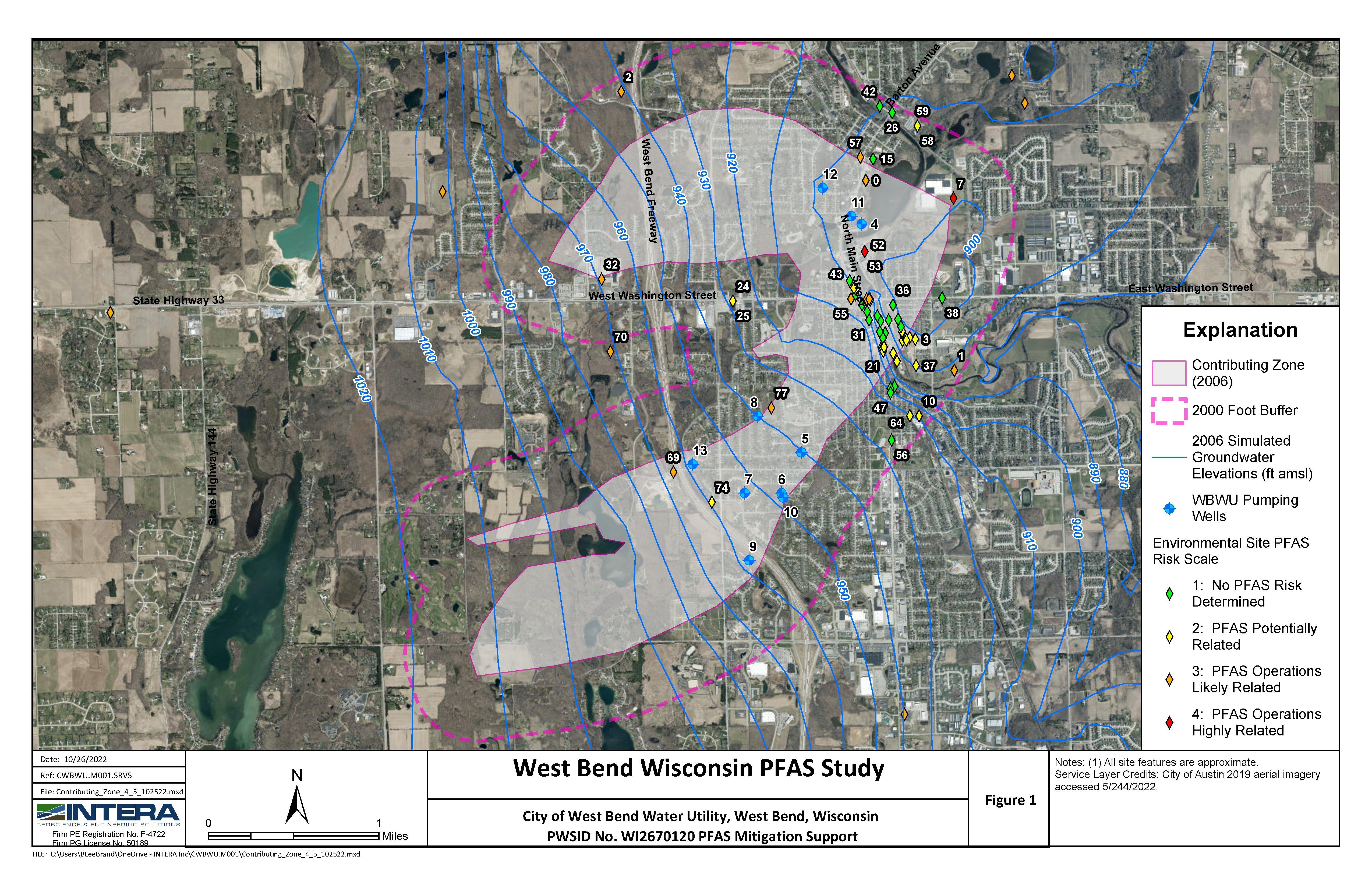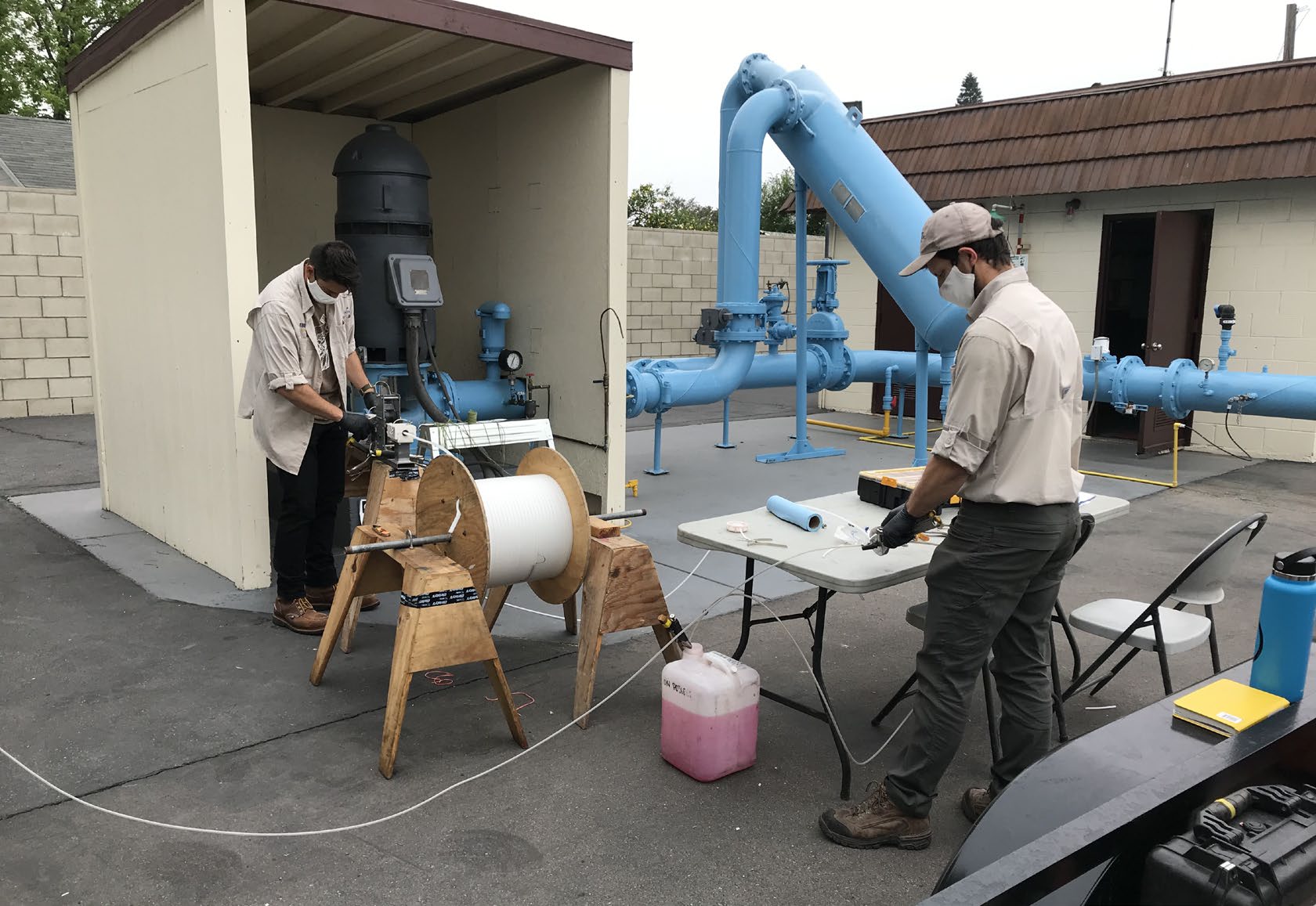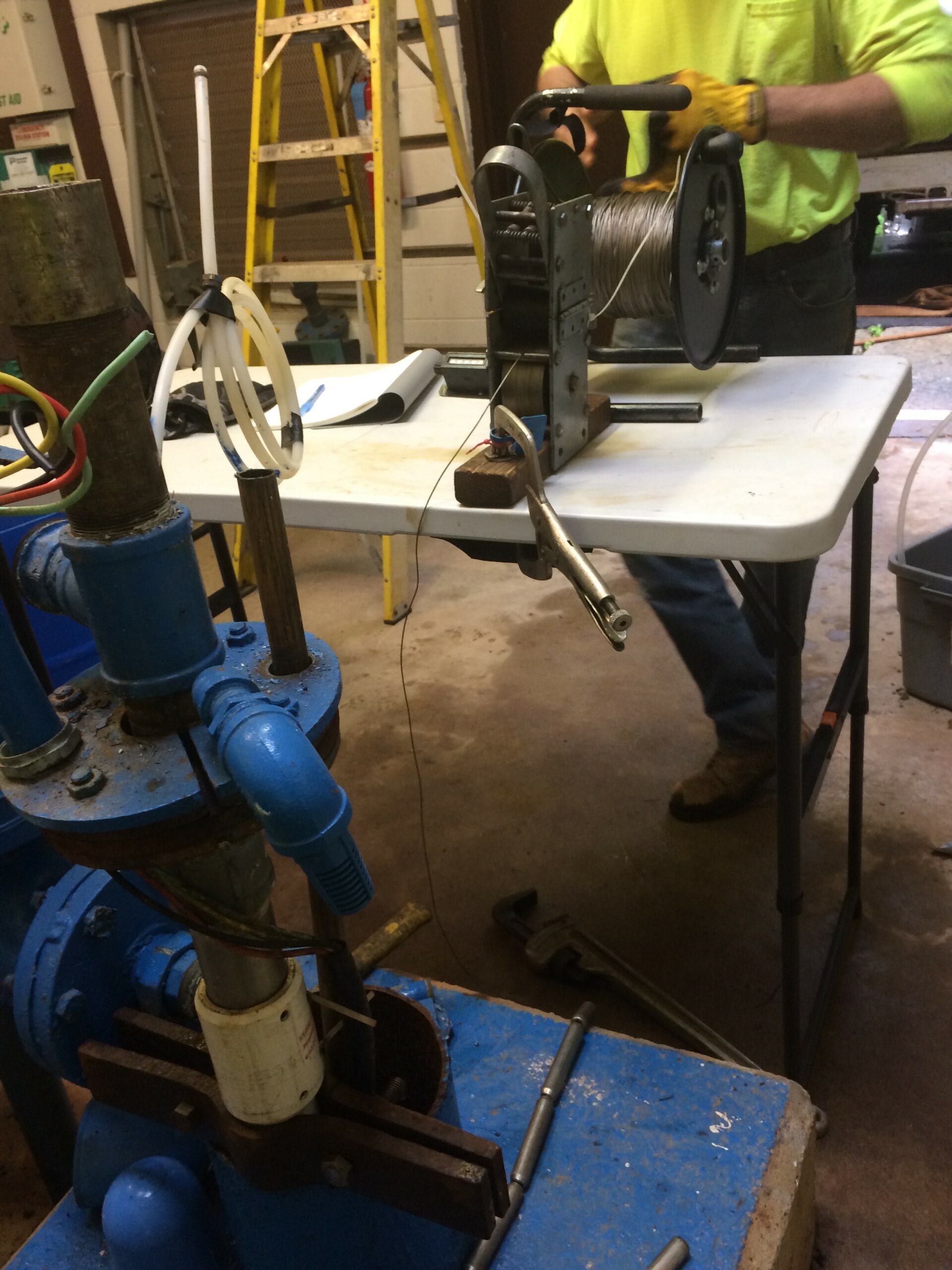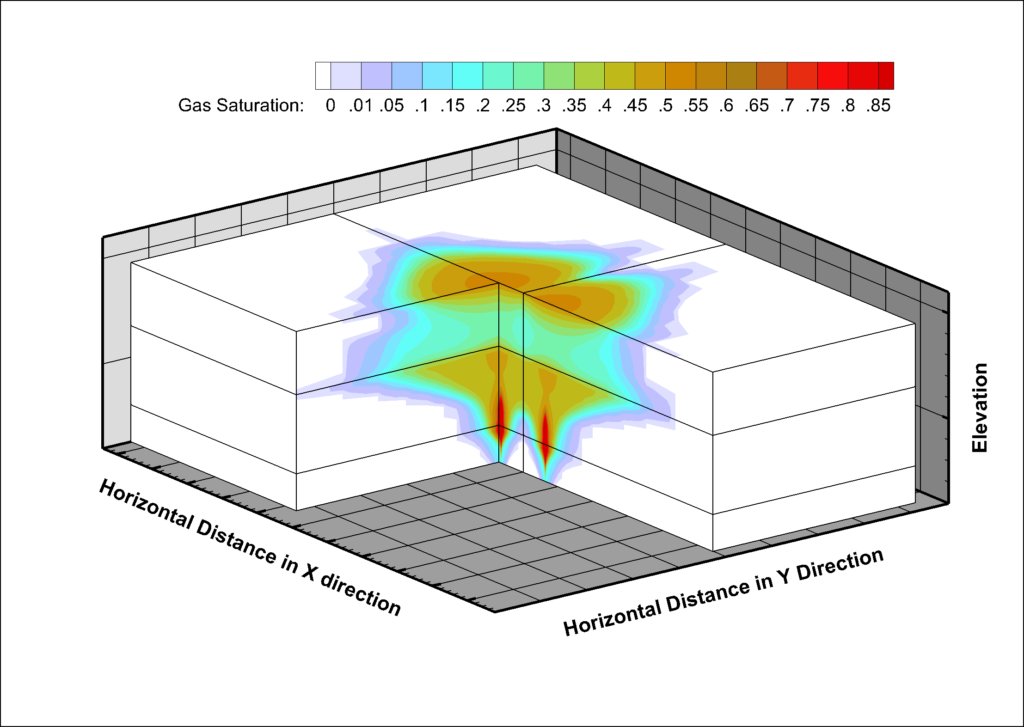
Challenge: To determine an unbiased two-dimensional representation of a three-dimensional CO2 plume within a layered reservoir with variable properties.
Solution: Class VI injection well permitting requires that multi-phase computational modeling be used to delineate the Area of Review (AoR), based on the horizontal extent of a three-dimensional (3D) CO2 plume. INTERA staff, while employed at Pacific Northwest National Laboratory, helped develop a novel approach to quantify the extent of a CO2 plume based on calculating the vertically integrated mass per area (VIMPA). Simply projecting the 3D distribution of CO2 saturation onto a horizontal plane is neither representative, nor straightforward and can be biased by thin, permeable layers in the reservoir. The VIMPA method provides a simple, additive approach for determining an unbiased horizontal extent of a 3D CO2 plume in complex reservoirs with variable properties. It considers all the CO2 within the simulation domain rather than just that which resides in a certain layer, and is independent of the reservoir properties and conditions, allowing for standardization and comparison across all injection scenarios and sites. The VIMPA method can be applied to different zones such as the injection zone or confining zone (or any zone of interest) to understand the distribution of CO2 mass, providing a useful guide for monitoring system design. It can also be applied to the different phases or states of CO2 to determine the distribution of the immobile CO2 (i.e., dissolved CO2 and entrapped CO2) and mobile CO2. To demonstrate the value of the VIMPA methodology, INTERA staff simulated the injection of CO2 into a hypothetical saline reservoir at a rate of 1 million tonnes per year for 30 years using the CO2 mode of the Subsurface Transport Over Multiple Phases (STOMP-CO2) simulator. Simulations showed that 95% of the injected CO2 mass resides in the central 55% of the plume area. This demonstrated why using the maximum plume size based on gas saturation may not be appropriate because of the small amount of CO2 present in the region near the plume edge.
Results: After developing and verifying the VIMPA approach, it was applied to a proposed CO2 storage site in the midwestern US (as part of DOE’s FutureGen 2.0 project) that received the first-ever US Environmental Protection Agency permit for Class VI injection wells to store CO2.
